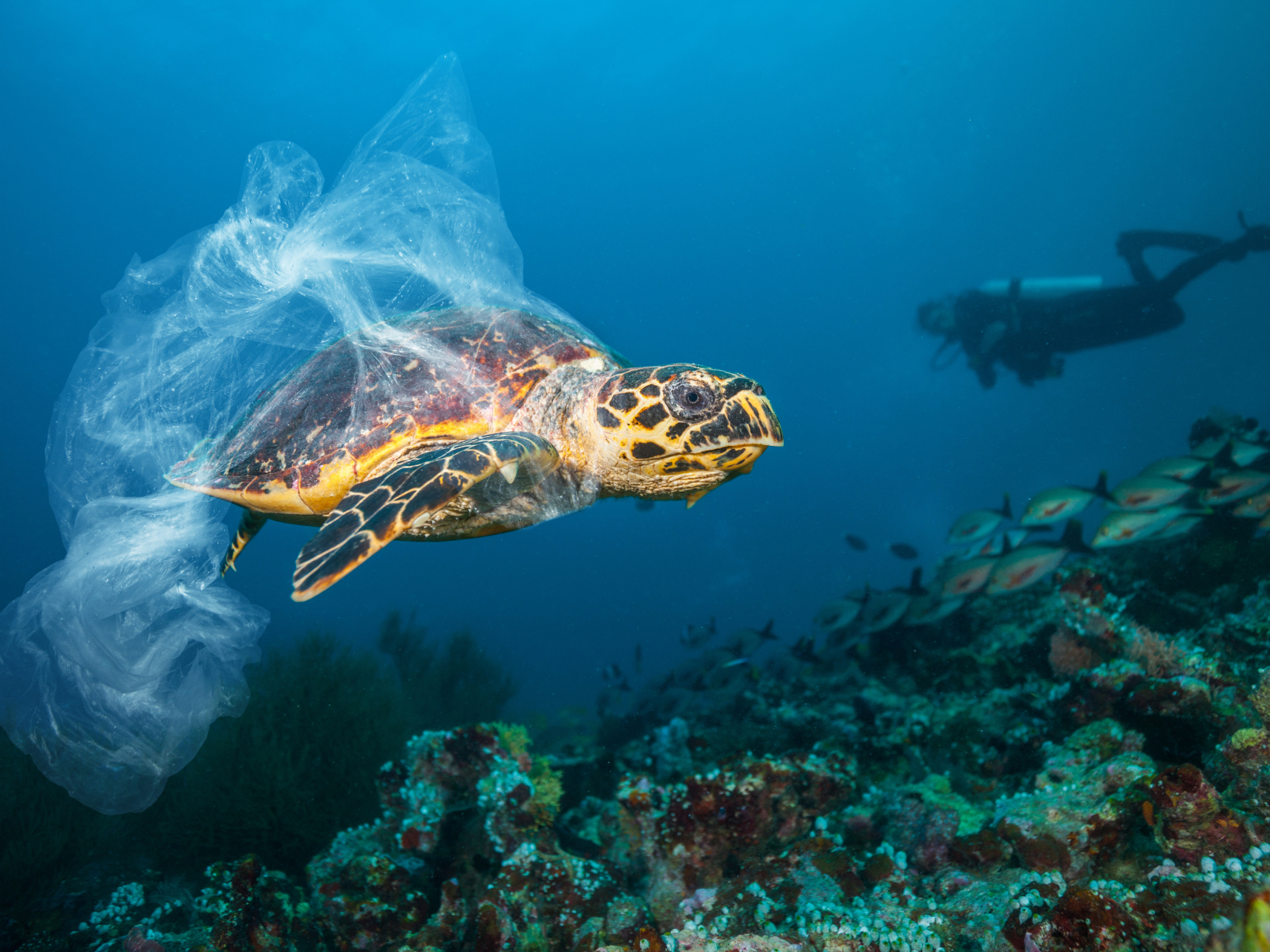Challenges and Preservation of Marine Ecosystems
Climate change is a pressing issue that affects every corner of our planet, including our oceans. As temperatures rise and weather patterns become more erratic, marine ecosystems face a myriad of challenges that threaten their delicate balance. In this article, we will dive into the world of marine ecosystems and explore the impact of climate change on their health and biodiversity. From ocean warming to overfishing, marine pollution, invasive species to ocean acidification, we will unravel the complexities of these challenges and discuss possible solutions to protect our oceans for future generations.
Ocean warming: Impacts and adaptation strategies
Ocean warming, driven by climate change, has profound impacts on marine ecosystems, leading to shifts in habitat distribution and alterations in the behavior of marine species. For instance, rising sea temperatures affect the distribution patterns of marine organisms such as fish, leading to changes in migration routes and spawning grounds. Additionally, warmer ocean temperatures can disrupt the balance of marine food webs, affecting the abundance and availability of prey species for marine predators.
To adapt to the challenges posed by ocean warming, proactive measures are necessary. These may include the establishment of marine protected areas to safeguard vulnerable habitats and species, the implementation of sustainable fisheries management practices to mitigate additional stressors on marine ecosystems, and the promotion of research initiatives to better understand the impacts of ocean warming on marine biodiversity. Collaboration among governments, scientific institutions, and local communities is crucial to effectively implement adaptation strategies and safeguard the long-term health and resilience of marine environments in the face of climate change.
The challenges of overfishing and its effects on marine biodiversity
Overfishing is a major threat to marine biodiversity and ecosystem health. As human populations grow, the demand for seafood increases, leading to unsustainable fishing practices. Large-scale commercial fishing operations often target key species without allowing them enough time to reproduce and replenish their populations. This disrupts the delicate food web, causing imbalances and negative cascading effects throughout the ecosystem.
Overfishing not only reduces fish populations but also impacts other species that depend on them for survival. For example, seabirds and marine mammals rely on fish as their primary food source. When fish populations decline, these species suffer, and their populations dwindle. Additionally, the loss of certain fish species can lead to an increase in other species, which can have unforeseen consequences on the ecosystem as a whole. To combat overfishing, sustainable fishing practices such as implementing fishing quotas, creating marine protected areas, and promoting responsible fishing techniques are essential.
Challenges and Solutions in Addressing Sea Level Rise
Sea level rise, fueled by climate change, poses a significant and escalating threat to coastal regions globally. As temperatures rise, polar ice caps and glaciers melt, causing seawater to expand and inundate low-lying coastal areas. This phenomenon exacerbates coastal erosion, increases the frequency and severity of flooding events, and compromises the integrity of critical coastal infrastructure and ecosystems. From densely populated urban centers to remote island nations, communities are grappling with the urgent need to adapt to rising sea levels, implementing measures such as coastal defenses, managed retreat strategies, and innovative engineering solutions to safeguard lives, livelihoods, and natural habitats.
Mitigating the impacts of sea level rise requires concerted efforts at both local and global levels. Sustainable coastal management practices, including the preservation and restoration of natural coastal buffers like mangroves and wetlands, play a crucial role in enhancing coastal resilience. Moreover, international cooperation and policy frameworks are essential to address the root causes of sea level rise by reducing greenhouse gas emissions and limiting global temperature rise. By prioritizing proactive adaptation measures and collective action, we can mitigate the adverse effects of sea level rise and build more resilient coastal communities capable of withstanding the challenges posed by a changing climate.
The importance of marine welfare and sustainable fishing practices
The welfare of marine life should be a priority in our efforts to preserve marine ecosystems. Marine animals, such as whales, dolphins, and sea turtles, are not only vital to the health of the oceans but also hold cultural and ecological significance. However, they face numerous threats, including entanglement in fishing gear, habitat destruction, and noise pollution from human activities.
To protect marine welfare, we must advocate for sustainable fishing practices that minimize harm to non-target species. Using alternative fishing gear that reduces bycatch, implementing seasonal fishing bans in critical habitats, and promoting responsible tourism practices can all contribute to the protection of marine welfare. By prioritizing the well-being of marine life, we ensure the long-term sustainability of our oceans.
Marine pollution: Causes, consequences, and possible solutions
Marine pollution is another major threat to the health of marine ecosystems and well-being of marine species. Various human activities, such as industrial waste disposal, oil spills, and improper waste management, contribute to the pollution of our oceans. The consequences of marine pollution are far-reaching and devastating. It affects marine life at all levels, from microscopic plankton to large marine mammals.
Pollutants in the water can disrupt the reproductive cycles of marine organisms, impair their immune systems, and even cause death. Chemical pollutants, such as heavy metals and pesticides, can accumulate in the tissues of marine animals, leading to long-term health effects and bioaccumulation within the food chain. Oil spills, whether from offshore drilling accidents or shipping mishaps, coat marine habitats and wildlife, causing widespread devastation and ecosystem disruption. Millions of tons of plastic waste end up in our oceans every year, threatening the lives of countless marine species. Plus millions of tons of plastic waste enter our oceans annually, posing hazards to marine animals through ingestion, entanglement, and habitat destruction. Plastic debris can persist in the environment for decades or even centuries, continually posing threats to marine ecosystems and biodiversity.
To combat marine pollution effectively, comprehensive measures are necessary. This includes implementing stricter regulations on industrial waste disposal, promoting sustainable agricultural practices to reduce runoff, and investing in improved waste management systems. Additionally, public awareness and education campaigns are crucial to fostering a culture of environmental stewardship and encouraging individuals and communities to adopt more environmentally friendly behaviors, like reducing our use of single-use plastics, improving waste management systems.
The threat of invasive species to marine ecosystems
Invasive species pose a significant threat to marine ecosystems around the world. These non-native species can outcompete native species for resources, disrupt food webs, and alter habitats. Invasive species are often introduced through human activities such as shipping and aquaculture, and their impacts can be devastating.
One epmaple of an invasive species in Portuguese waters is the Pacific oyster (Crassostrea gigas), introduced for aquaculture purposes but now established in several coastal areas since the 1960s. Competing with native oyster species for resources and space, the Pacific oyster’s rapid growth and high reproductive capacity have led to its dominance in estuaries and intertidal zones. Efforts to control its spread involve monitoring, early detection, and measures to prevent further introductions, including native oyster restoration initiatives and regulations to minimize accidental releases from aquaculture activities. Addressing this threat necessitates comprehensive management strategies and international cooperation to mitigate its impacts on marine ecosystems.
Ocean acidification: Understanding the impacts and potential solutions
Ocean acidification is a consequence of climate change that has far-reaching impacts on marine ecosystems. As carbon dioxide levels in the atmosphere rise, the oceans absorb a significant portion of this excess CO2, leading to a decrease in pH levels. This decrease in pH, known as ocean acidification, has detrimental effects on marine organisms, particularly those with calcium carbonate shells or skeletons, such as corals, shellfish, and some plankton.
Ocean acidification can hinder the growth and development of these organisms, making them more susceptible to predation and disease. It also affects the entire food web, as many species rely on these organisms as a food source. To address ocean acidification, we must reduce our carbon emissions and promote the use of alternative energy sources. Additionally, protecting and restoring coastal habitats, such as mangroves and seagrass beds, can help mitigate the impacts of ocean acidification.
The loss of biodiversity in marine ecosystems and its ecological consequences
The loss of biodiversity in marine ecosystems is a growing concern. Climate change, overfishing, pollution, and habitat destruction all contribute to the decline in species diversity. When certain species disappear from an ecosystem, it can have cascading effects on other species and disrupt the overall balance of the ecosystem.
Biodiversity loss reduces the resilience of marine ecosystems, making them more vulnerable to future disturbances. It also affects the services that ecosystems provide, such as food production, water purification, and climate regulation. To address the loss of biodiversity, we must protect and restore critical habitats, implement sustainable fishing practices, and reduce pollution. Conservation efforts, such as establishing marine protected areas and supporting research and monitoring programs, are vital for the preservation of marine biodiversity.
Coastal development and its impact on marine health
Coastal development, driven by human population growth and economic activities, has significant impacts on marine health. The construction of infrastructure, such as ports, marinas, and coastal resorts, often leads to the destruction of critical habitats, such as mangroves, seagrass beds, and coral reefs. These habitats provide essential ecosystem services, including coastal protection, habitat for marine species, and carbon storage.
Coastal development also contributes to pollution through runoff from urban areas and the discharge of untreated wastewater. Sedimentation from construction activities can smother corals and other benthic organisms, leading to their decline. To minimize the impacts of coastal development, we must implement sustainable coastal management practices that prioritize the conservation of critical habitats, promote responsible tourism, and improve waste management systems.
Addressing the challenges: Promoting conservation and sustainable practices
Addressing the challenges facing marine ecosystems requires a multi-faceted approach that combines conservation efforts, sustainable practices, and policy changes. Governments, non-profit organizations, and individuals all have a role to play in protecting our oceans.
Conservation efforts should focus on establishing marine protected areas, promoting sustainable fishing practices, and restoring critical habitats. Education and awareness campaigns can also play a crucial role in changing attitudes and behaviors towards the oceans. By educating the public about the importance of marine ecosystems and the threats they face, we can inspire action and foster a sense of stewardship.
Policy changes are essential to ensure the long-term sustainability of our oceans. Governments should enact and enforce stricter regulations on fishing practices, waste management, and coastal development. International cooperation is also crucial, as many of the challenges facing marine ecosystems are global in nature. By working together, we can create a brighter future for our oceans.
Conclusion: The future of marine ecosystems in the face of climate change
The future of marine ecosystems hangs in the balance as we continue to grapple with the impacts of climate change. However, by understanding the challenges they face and taking action to address them, we can pave the way for a more sustainable and resilient future.
It is up to each and every one of us to make a difference. Whether it’s reducing our carbon footprint, supporting sustainable fishing practices, or advocating for stronger environmental policies, our actions matter. Together, we can protect the health and welfare of our oceans and ensure that future generations can also experience the wonders of marine ecosystems.
So, let’s dive into the future and take on the challenges of climate change head-on. By joining the new marine health and welfare course, we can equip ourselves with the knowledge and tools needed to protect our ocean. Together, let’s make the differnce!

